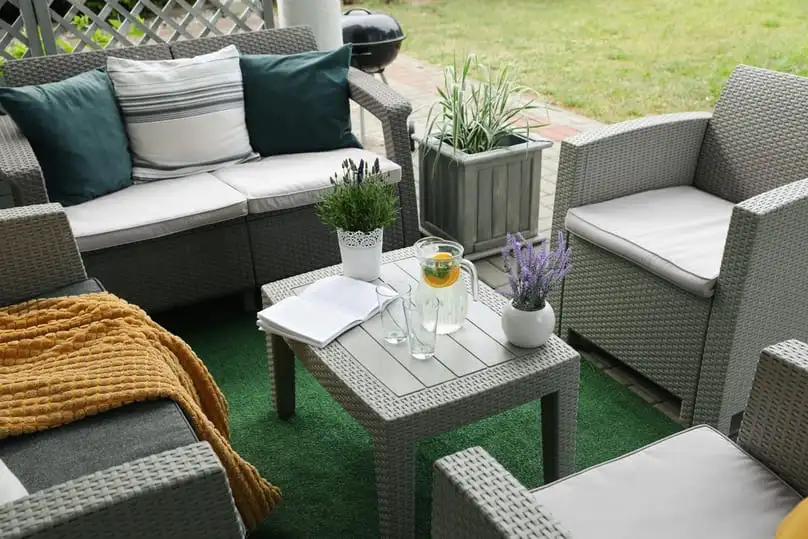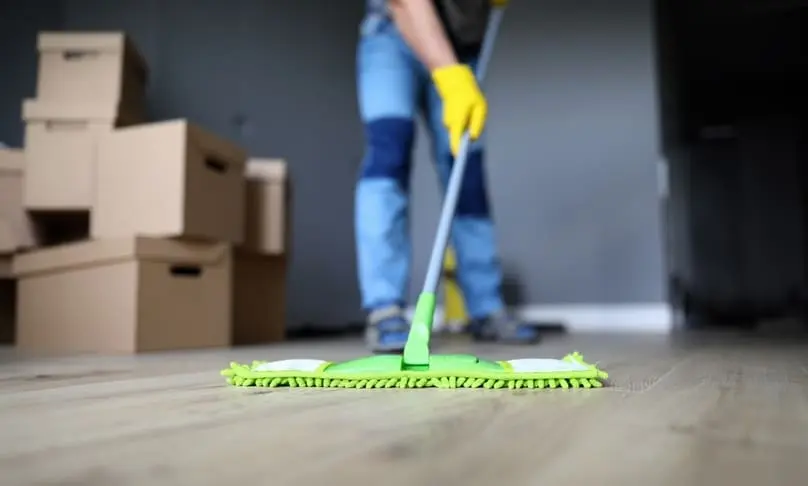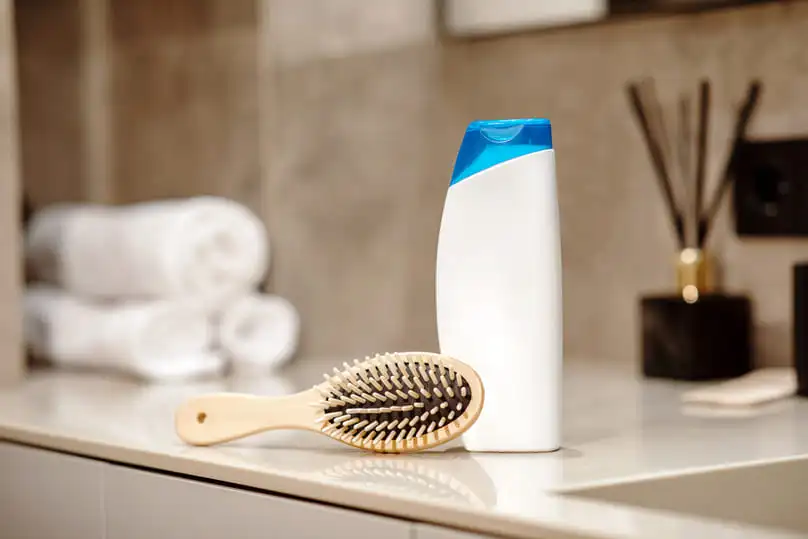Learning how to wash hair brushes is essential for a healthier hair routine because dirty brushes can spread oils, products, and bacteria. Many people overlook this task, yet it should be part of your regular self-care and cleaning habits to protect hair health.
You wash your hair frequently, but when was the last time you focused on how to clean your hair brush properly at home? Yorleny’s Cleaning Services shares practical steps to help you achieve cleaner brushes and healthier hair.
Why It’s Important to Clean Your Hair Brushes
Understanding how to clean a hair brush at home is vital to prevent germs, fungi, and residue from reaching your scalp and strands. Neglecting this simple step can lead to buildup that causes greasiness, dandruff, irritation, and even infections. A clean hairbrush distributes natural oils more evenly, keeping hair shiny, smooth, and healthy while extending the lifespan of your brush.
Product Buildup, Oil, and Dead Skin Cells
Every brush collects oil, dead skin, dust, and product residue, so knowing how do you deep clean hair brushes becomes very important. Without regular maintenance, this buildup is transferred back onto your freshly washed hair, making it greasy, flat, and prone to scalp irritation. Here’s what typically accumulates on a dirty brush:
- Dead skin cells: Your scalp is continually shedding dead skin, which gathers on your brush.
- Scalp oils: Natural oils from your scalp accumulate on the bristles.
- Product residue: Hairspray, dry shampoo, styling lotions, and other products produce a greasy residue.
- Dust and dirt: Environmental dust and grime become caught in the brush.
- Bacteria: These components provide a breeding habitat for bacteria, which can cause scalp problems.
How Dirty Brushes Affect Your Hair and Scalp
Why is it important to know how to wash hair brushes? The reason is, all the build up mentioned before can mess with your brush, making it less effective. A dirty hair brush can affect your hair and scalp In the following ways:
- Greasy Hair: The buildup of oils, dust, and product on your brush transfers to your hair, making it appear unclean and weighed down faster.
- Tangles and Breakage: Accumulation of debris and hair on the bristles can make them less smooth, making it difficult to disentangle your hair and increasing the chance of breakage.
- Product Buildup: Styling product residue can build up on hair, causing it to seem dirty and dull.
- Itchiness and Irritation: Using a dirty brush can cause itching and irritation to the scalp because of debris, oils, and dead skin cells.
- Dandruff and Yeast Overgrowth: Dirty brushes can promote yeast growth, leading to dandruff and other scalp disorders.
- Inflammation and Infection: Bacteria and yeast from dirty brushes can cause scalp congestion, irritation, and infection.
- Blocked Follicles: Hair follicles can become clogged with debris and grease, preventing healthy growth.
For persistent buildup, especially dust, you may need to know how to get dust out of hairbrush effectively to keep your scalp safe. Even professional stylists understand this, which is why how do hairdressers clean their brushes is a standard part of salon hygiene.
Extra Considerations in Florida’s Humid Climate
Learning how to wash hair brushes is especially important in Florida’s humid climate since high moisture levels provide an ideal breeding ground for fungi and bacteria, both of which flourish in the accumulation of filthy brushes. Regular, thorough cleaning removes buildup, prevents scalp concerns, and guarantees that your brush is successful in keeping your hair clean and healthy.
How to Wash Hair Brushes at Home (Step-by-Step)
Tools and Materials You’ll Need
Before learning how to wash hair brushes, you’ll need to gather some essential tools. Tools and materials you will need are
- Sink or basin: A sink or huge dish for soaking the brush.
- Warm Water: To create your cleaning solution.
- Shampoo or dish soap: To break down oils and product buildup, use a light shampoo (without sulfates for natural brushes) or dish soap.
- Old Toothbrush or Comb: To scrub and remove hair and debris from the bristles.
- Tweezers or scissors: Remove obstinate hair from the brush as needed.
- Towel: To dry the brush after washing.
How to Clean Plastic or Synthetic Brushes
When learning how to wash hair brushes, plastic or synthetic ones are usually the easiest to clean and maintain properly. First, remove stray hairs and debris using a comb or your fingers to prevent buildup before deep cleaning the bristles. Then, soak the brush in a bowl of warm water mixed with mild shampoo or dish soap for 10–15 minutes. To remove stuck-on residue, scrub gently between the bristles with a toothbrush, rinse thoroughly, and air-dry bristles facing down to prevent mildew.
How to Wash Boar Bristle or Wooden-Handled Brushes
Knowing how to wash hair brushes made from boar bristles or wood requires extra care to protect the handle and bristles.
Start by removing loose hair, then gently scrub the bristles with a toothbrush dipped in warm, soapy water, avoiding soaking the wooden base. Instead of immersing the entire brush, dip and rinse only the bristle head quickly, ensuring the wooden handle remains dry and intact. Finally, blot the brush with a towel and let it air-dry bristles down on a clean cloth to preserve durability.
How to Deep Clean a Hair Brush Safely
Here is a step-by-step guide on how to wash hair brushes deeply to remove hair, oils, and product buildup efficiently and safely.
- Begin by removing any hair caught in the bristles using your fingers or a comb. A rat-tail comb can be especially useful here.
- Prepare the cleaning solution. Fill a sink or dish with warm water and a generous amount of shampoo or mild dish soap. Add about ½ cup of baking soda or a splash of vinegar to enhance the cleaning effect.
- For plastic or metal brushes, fully submerge them in the soapy solution and soak for 10–30 minutes. Wooden, fabric, or padded brushes should not be submerged; dip only the bristles while keeping the base dry.
- Scrub and dislodge residue using an old toothbrush, moving from the base upward. This step is critical for an effective how to wash hair brushes results, especially for product buildup.
- Rinse the brush thoroughly under warm running water to remove soap and debris completely.
- Air-dry the brush entirely by shaking out excess water and placing it bristles-down on a clean towel. Avoid using the brush before it is fully dry to prevent mildew.
How to Remove Hair, Dust, and Lint from Your Brushes
Daily or Weekly Maintenance Tips
Daily Maintenance Tips
- Remove Hair: After each usage, use your fingers, a comb, or a brush cleaning tool to remove any trapped hair from the bristles.
- Shake It Out: Gently tap the brush on the sink to remove any loose lint, dust, or product residue.
- Proper Storage: Store your brush in a clean, dry place to minimize dust and bacteria buildup.
Weekly Maintenance Tips
- Prepare the Solution: In a mixing bowl, combine a few drops of mild shampoo and some warm water.
- Soak and Scrub: Immerse the brush in the solution for 10–15 minutes to dissolve oils and residue. Scrub between the bristles using a comb tip or brush cleaning tool to master how to wash hair brushes
- Rinse Thoroughly: Rinse the brush thoroughly with warm running water.
- Air Dry: Place the brush on a clean cloth, bristles facing down. Allow it to air dry thoroughly to prevent bacterial growth and bristle deformation.
Removing Trapped Hair
To remove hair, dust, and lint, lift hair with a comb, fingers, or small tool. For plastic brushes, soak them in warm soapy water, then scrub between bristles with a toothbrush. Following these steps ensures proper how to wash hair brushes results, leaving them hygienic and ready for daily use.
How Often Should You Clean Your Hair Brushes?
Deep clean your hairbrush every one to four weeks, depending on hair type and product usage. Frequent cleaning is key to mastering how to wash hair brushes properly and preventing buildup.
Daily and Weekly Tasks
Daily duties should include removing stray hairs from your brush after each use and a weekly deep clean, especially if you use styling products or have an oily scalp. The more you use your brush, the more hair, oils, and product residue it collects, therefore a weekly deep clean eliminates this buildup, guarantees hygiene, and keeps your brush performing properly.
Wrapping Up: Healthy Hair Starts with Clean Brushes
Simple Cleaning Habits for Everyday Brush Care
Learning how to wash hair brushes regularly keeps them free from oils, dirt, and product buildup. Just a few minutes each week can make a big difference in your hair health and help extend the life of your brushes.
Professional vs. DIY: Knowing When to Deep Clean
While quick rinses and at-home cleaning methods are effective when you don’t know how to wash hair brushes, sometimes you’ll need a more thorough approach—especially if you notice stubborn residue, lint, or buildup that just won’t go away. Knowing when to switch from DIY to a deeper clean ensures your tools stay hygienic and safe to use.
Take the Next Step: Pair Brush Hygiene with a Clean Home
Caring for your personal items goes hand in hand with caring for your living space. At Yorleny’s Cleaning Services, we specialize in creating healthier, cleaner homes so you can feel confident in every part of your daily routine. Ready to enjoy the benefits of a cleaner, fresher home environment? Contact us today to book professional cleaning services in Florida.
FAQs: Cleaning Hair Brushes the Right Way
How do you clean a hairbrush without ruining it?
If you want to know how to wash hair brushes without ruining them, first remove trapped hair using a comb or your fingers. Next, soak the brush in warm, soapy water—using shampoo for natural bristles or mild soap for synthetics—while avoiding the wooden handle.
To remove debris and grease, scrub bristles and base with a toothbrush, rinse carefully, then air-dry bristles down to prevent mildew.
Can you soak a hairbrush in vinegar?
Yes, soaking is a common method when learning how to wash hair brushes effectively with vinegar and water to dissolve buildup and bacteria.
Mix equal parts white vinegar and warm water, or add baking soda for stubborn residue, then submerge the brush for 15–30 minutes. After soaking, scrub with a toothbrush to remove loosened debris, rinse thoroughly, and let the brush air-dry with bristles pointing downward.
What is the best way to remove lint from brushes?
The best way to remove lint while practicing how to wash hair brushes is to follow a multi-step cleaning process with proper tools. First, physically remove large particles using fingers or a comb, then use a seam ripper, cleaning brush, or similar tool for precision.
For stubborn lint, soak the brush in warm, soapy water or vinegar solution, scrub gently, and finish by air-drying completely afterward.
How do I clean an electric straightening brush?
When learning how to wash hair brushes, electric models require special care, since they cannot be submerged in water or soaked in solutions.
First, unplug and let the brush cool completely before removing loose hair and dust from bristles and heated plates using a comb or tool. Wipe the brush gently with a slightly damp cloth to remove residue, then apply rubbing alcohol with a cotton swab for buildup. Finally, ensure the brush is fully air-dried before storing or using it again safely, avoiding any water contact with heating elements.
Recent Articles

How to Clean a Microfiber Couch: Step-by-Step Guide
Microfiber is a revolutionary and incredibly soft material for sofas and armchairs, but if you’re wondering how to clean a microfiber couch,…

Best Way to Clean Patio Furniture (Step-by-Step Guide for Florida Homes)
As long as you have a patio, terrace, or covered porch, you only need one thing to create a welcoming atmosphere: outdoor…

Move In Cleaning Service vs DIY: Which Saves More Time and Stress?
Moving always brings a mix of emotions. The process feels overwhelming, especially when comparing move in cleaning service vs DIY options. This…
An overview of the areas we serve
See below to check if our top-quality house cleaning services are available in your city and book your first appointment with just a few clicks.
